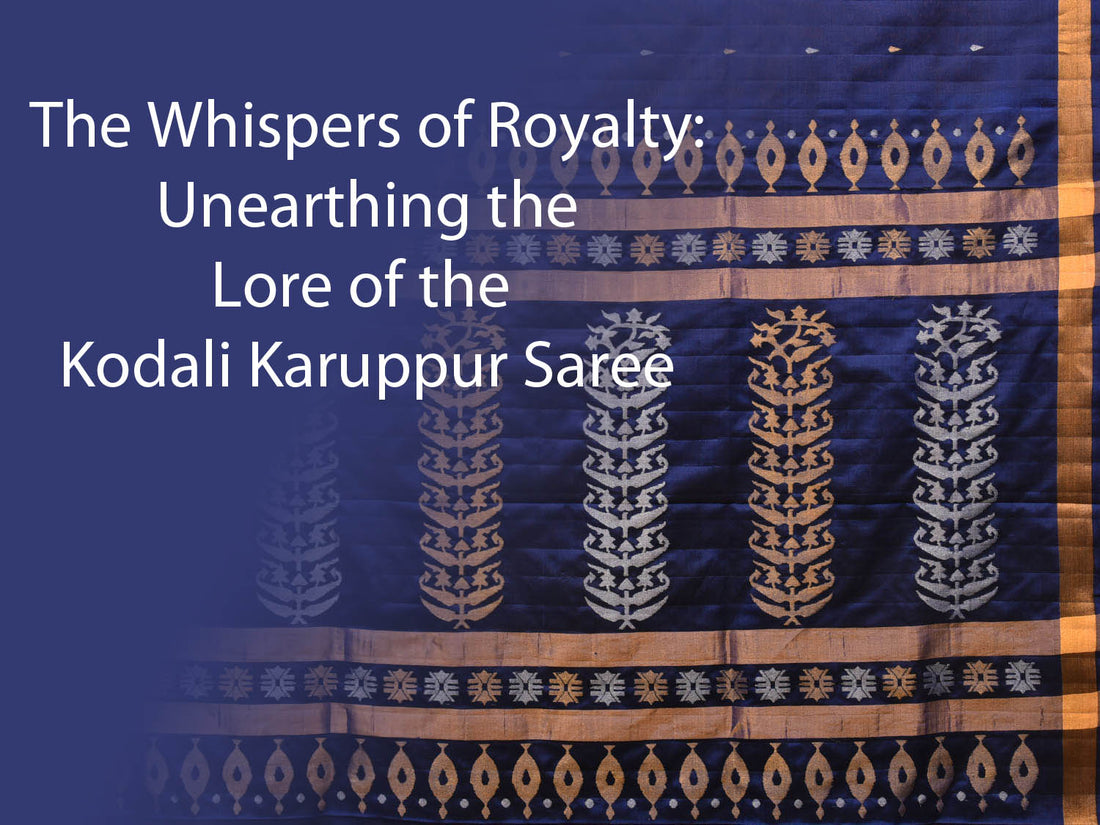
The Whispers of Royalty: Unearthing the Lore of the Kodali Karuppur Saree

In the vibrant tapestry of India's textile heritage, certain weaves whisper tales of bygone eras, of royal patronage and unparalleled artistry. Among these treasured crafts lies the story of the Kodali Karuppur saree, a textile so exclusive that its shimmering threads once graced only the Maratha royalty of Thanjavur. At Nilambari, we believe in keeping these rich narratives alive, and today, we invite you to journey with us as we delve into the fascinating lore of this nearly forgotten masterpiece.
Imagine the grandeur of 18th and 19th century Thanjavur, a kingdom steeped in culture and art. Amidst this opulence, the Kodali Karuppur saree emerged not merely as clothing, but as an emblem of prestige and a testament to exquisite craftsmanship. Worn solely by the royal family, these sarees were imbued with a significance that transcended mere aesthetics. They were a visual language of status and a celebration of the skilled hands that brought them to life.
What truly set the Kodali Karuppur apart was its unique and intricate creation process – a harmonious blend of three distinct textile arts. The foundation was typically woven with the finest cotton, into which gleaming threads of gold or silver zari were meticulously incorporated. This foundational weave often echoed the delicate patterns seen in Jamdani, where motifs appear to float ethereally on the fabric.
But the artistry didn't end at the loom. The woven fabric then transitioned into the hands of other skilled artisans who brought it to life with vibrant hues and intricate designs. Using natural dyes derived from the earth, these craftspeople employed both the techniques of hand-painting and block printing. Delicate floral patterns, sinuous creepers, and traditional symbols would emerge, transforming the woven base into a breathtaking canvas of textile art.
The interplay between the shimmering zari work and the rich, earthy tones of the natural dyes gave the Kodali Karuppur saree a distinctive character – a subdued elegance that exuded both regality and a deep connection to the land. Each saree was a labor of love, a testament to the dedication and mastery of weavers, painters, and printers working in concert.
However, as the tides of time shifted and royal patronage waned, the laborious and specialized craft of creating Kodali Karuppur sarees began to decline. The intricate knowledge and skills required for this unique fusion of techniques became harder to sustain, and the once-celebrated weave gradually faded from collective memory. The whispers of its royal past grew faint.
Yet, the story doesn't end in silence. Today, there is a renewed appreciation for India's rich textile heritage, and passionate individuals and organizations are working tirelessly to revive these forgotten treasures. At Nilambari, we feel a deep connection to this mission. We believe that the stories woven into these fabrics are invaluable, offering a glimpse into our cultural identity and the remarkable skills of our ancestors.
Inspired by the exquisite beauty and historical significance of the Kodali Karuppur, we are honored to carry its legacy forward in our own way. By carefully studying and reinterpreting its timeless motifs, we are weaving them into the elegant drape of our Uppada Jamdani sarees. This endeavor is not merely about replicating the past; it's about creating a dialogue between two magnificent weaving traditions, ensuring that the spirit and artistry of the Kodali Karuppur continue to resonate in the contemporary world.
The lore of the Kodali Karuppur saree serves as a potent reminder of the artistry and dedication embedded within India's handloom tradition. It speaks of a time when textiles were not just garments but powerful symbols of culture and heritage. As we at Nilambari continue our journey, we are committed to unearthing and celebrating these stories, weaving them into the fabric of our present and ensuring that the whispers of royalty continue to echo for generations to come.
What are your thoughts on preserving and reviving our textile heritage? Share your comments below – we'd love to hear your perspective!